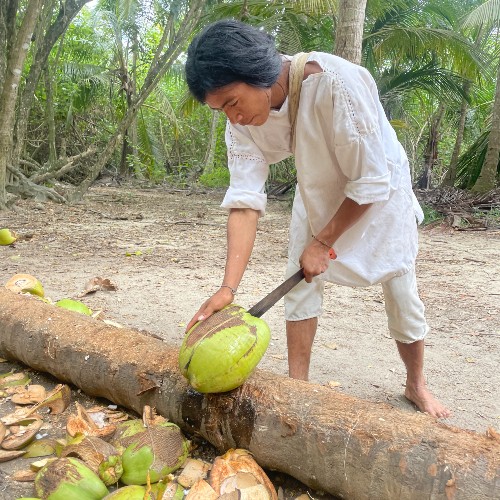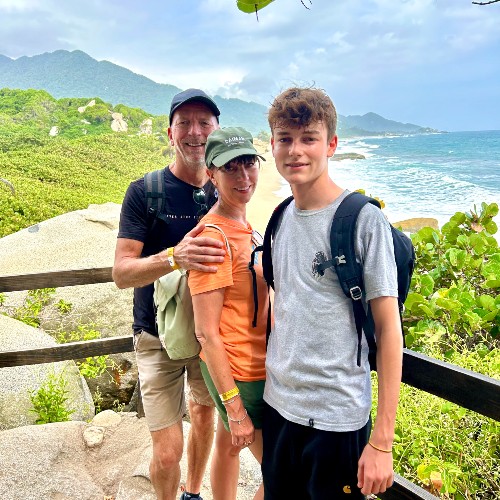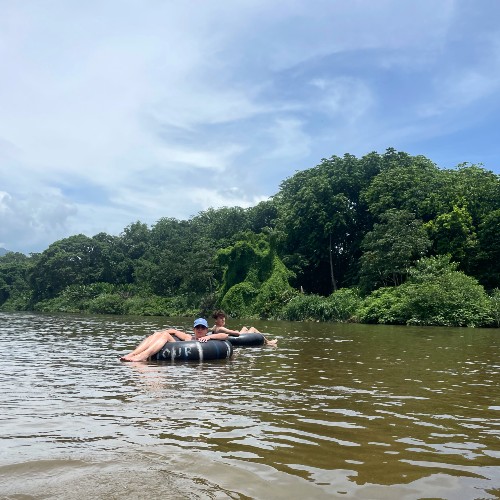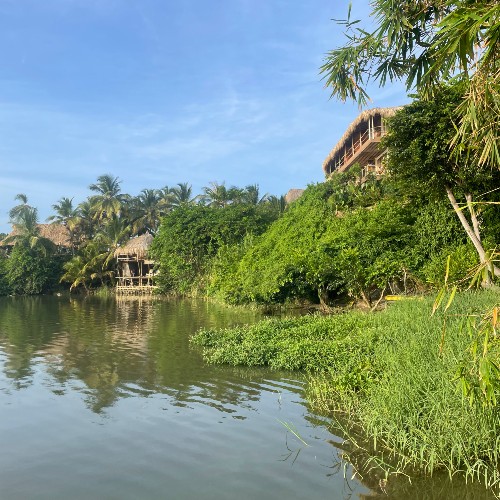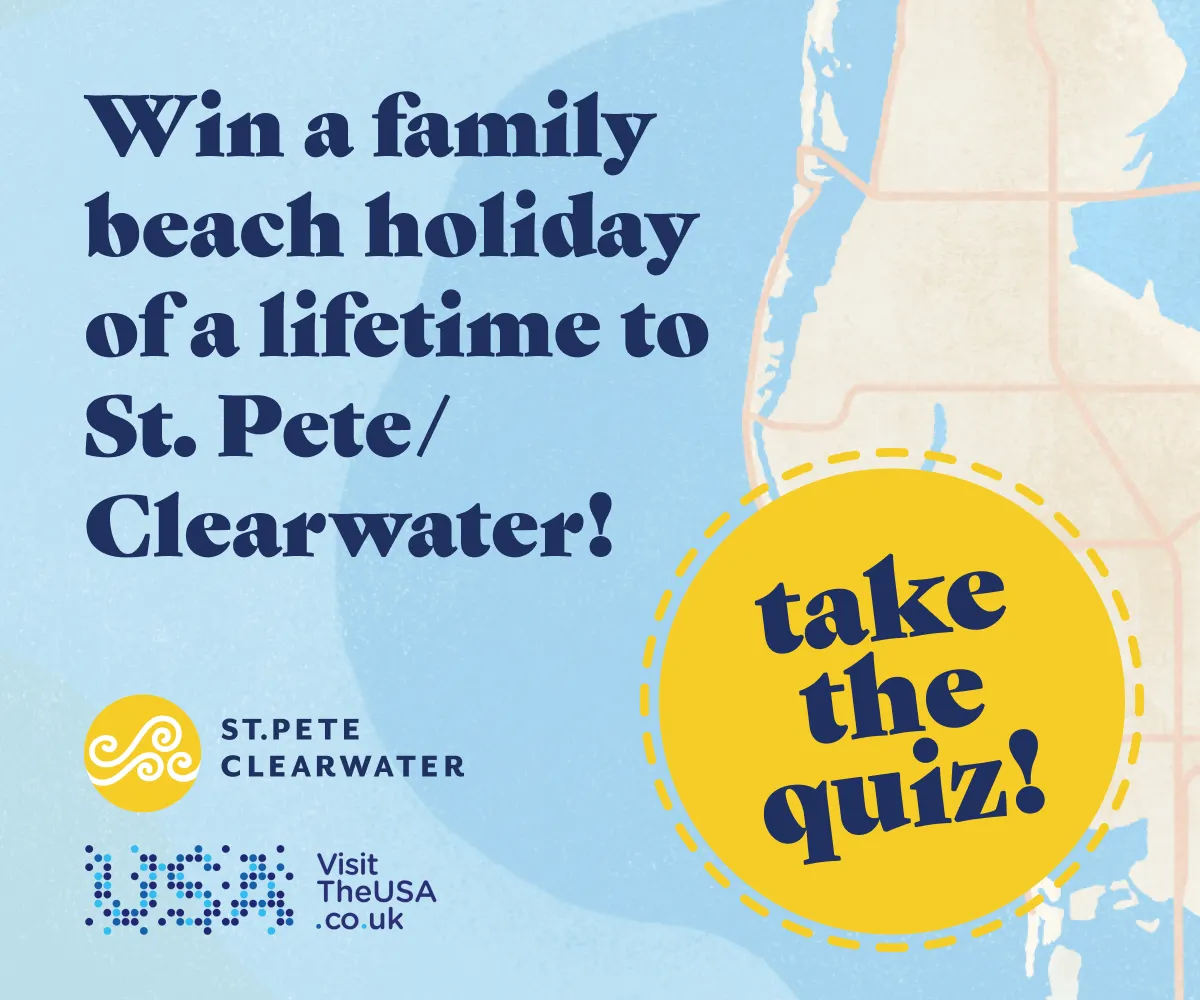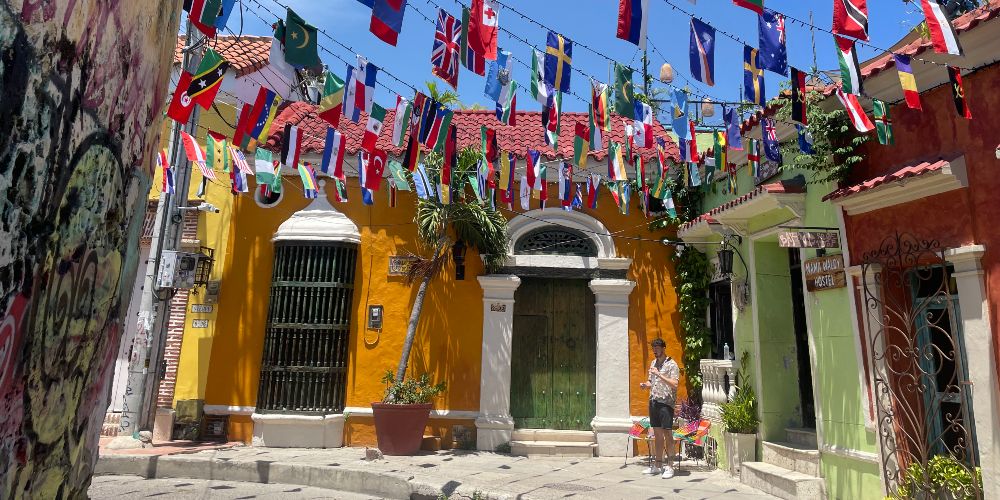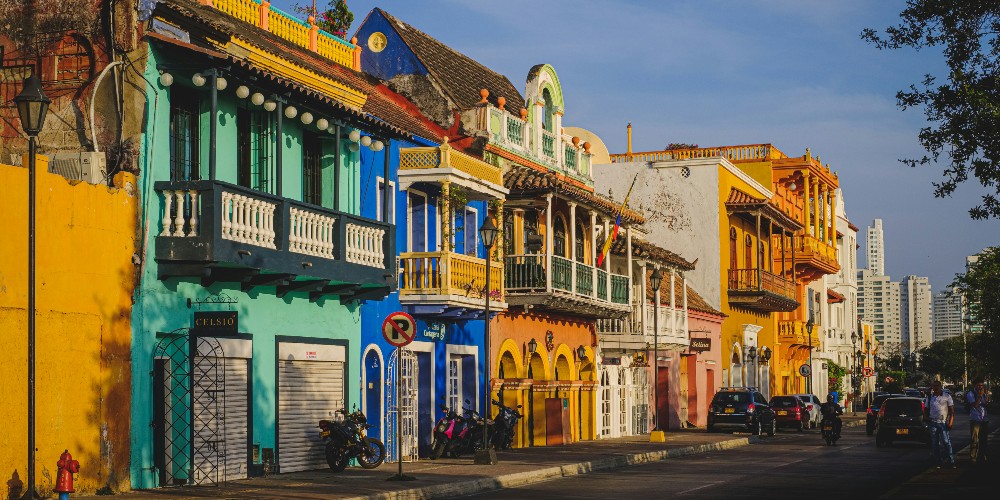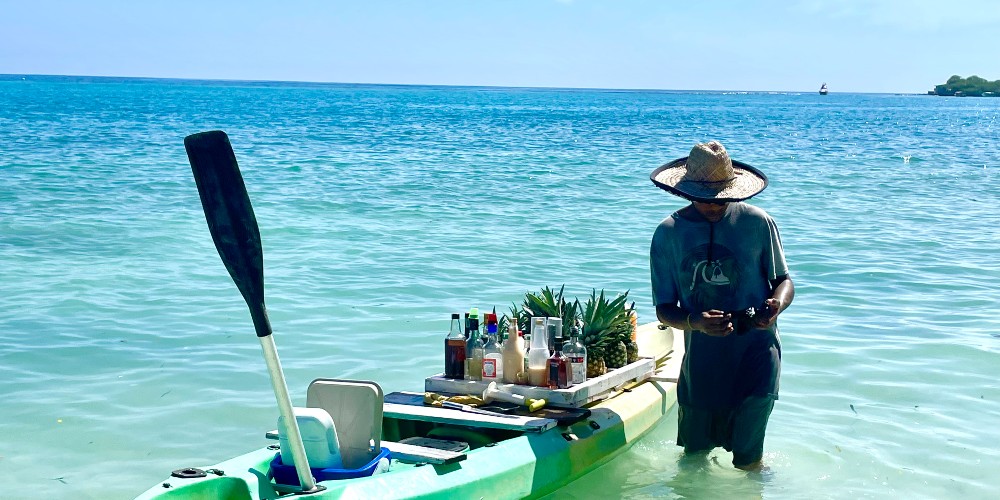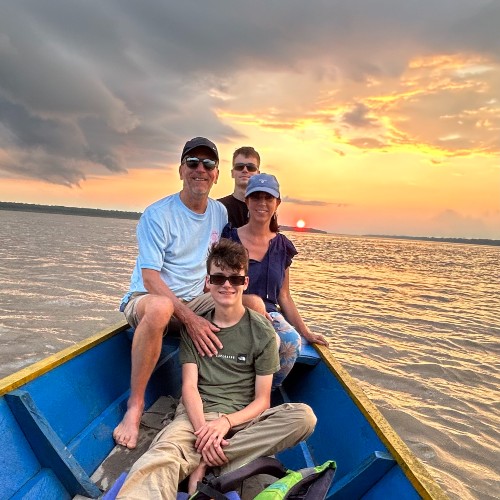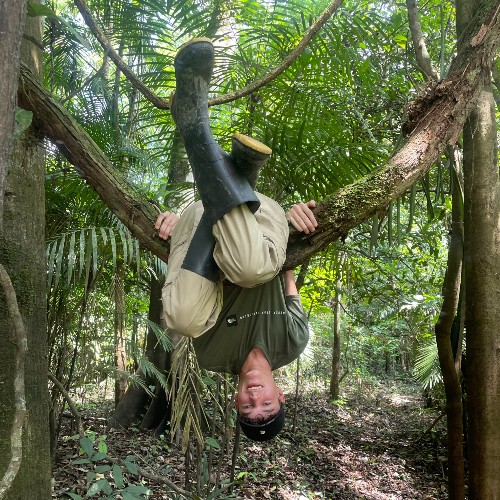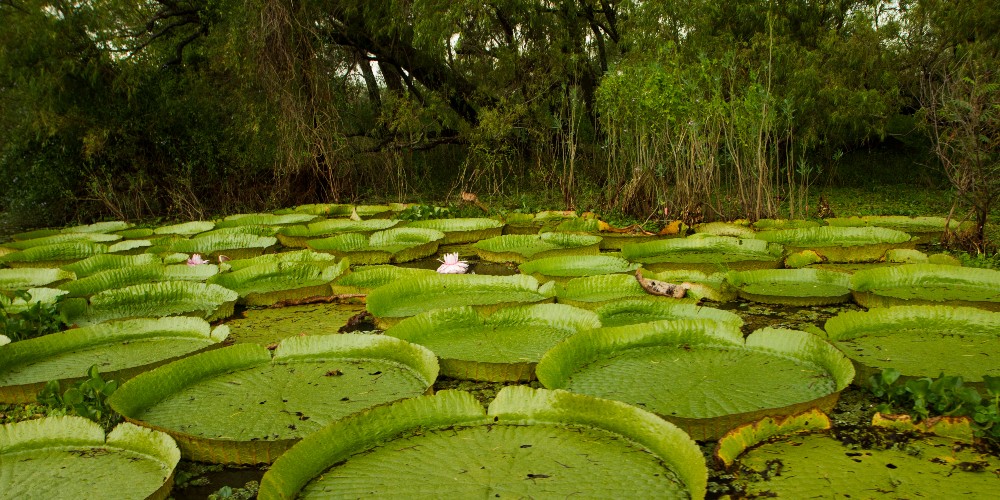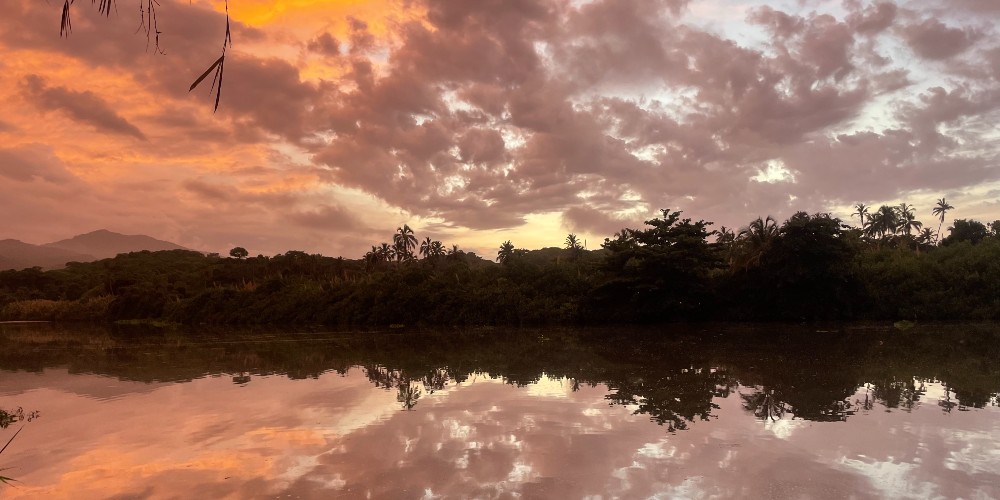Between chicken feet snacks and piranha filled rivers, Colombia is full of surprises. Kate Wickers surprises her teenage sons by braving them all.
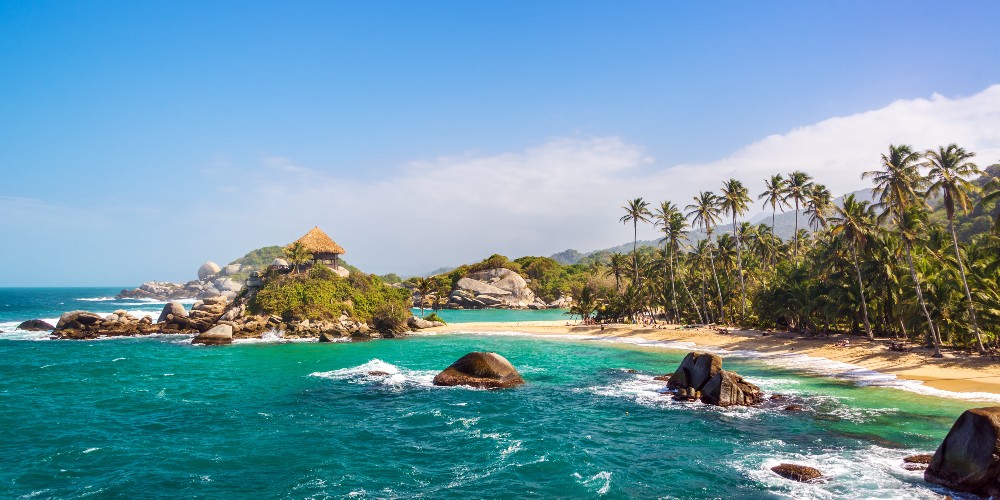
Caribbean coast, Tayrona National Park
Freddie, my 17 year old son, is floating on his back in the Amazon River in Colombia, just a few kilometres from the border of deepest, darkest Peru. “For goodness’ sake, Mum, just come in,” he shouts. We are at a “safe” swimming creek, which we’ve kayaked to with a guide.
I dip a toe in the milk-chocolate coloured water and swirl it around.
“I wouldn’t do that,” shouts Ben, aged twenty, who has swum out to join his brother. “The piranha might think it’s a juicy, fat worm.”
So, whose bright idea was all this? Well, actually, it was mine.
Colombia brings out the parental cool, if you let it
Although I’m often looking back with rosy-tinted nostalgia to family travels when my three sons were young (choosing to forget the endless rounds of applying sun lotion to wriggling bodies, their aversion to any foreign food, and the amount of kit I was required to lug around), I am secretly enjoying that, these days, I’m often the one who needs to be looked after by my strapping sons.
“Watch out for Mum, she’s going to hate this,” I hear them whisper, when suggesting any number of terrifying activities.
And, oh, how I love to prove them wrong.

Street art, Candaleria, Colombia
Begin your Colombian adventure in the Andes hugged capital of Bogota
Razor-toothed fish aside, seven years into a peace agreement, the majority of Colombia is now considered a safe tourist destination. Although, like anywhere in South America, it’s wise to be vigilant, at no point on our travels did I ever feel unsafe.
We begin in the Andes hugged capital of Bogota, casting off jetlag while marvelling at the city’s street art in the Bohemian neighbourhood of Candelaria, and enjoying the fabulous food scene.
On a tour of Paloquemao produce market, we sample patacones (fried green plantain) and taste caruba, which looks like a banana but has orange flesh and a passion fruit flavour. But we decline the popular snack of chicken foot. “Oh, it’s offal,” I say to our guide, who misunderstands. Her reply of, “No, they’re really quite tasty!”, gives us all a good laugh.
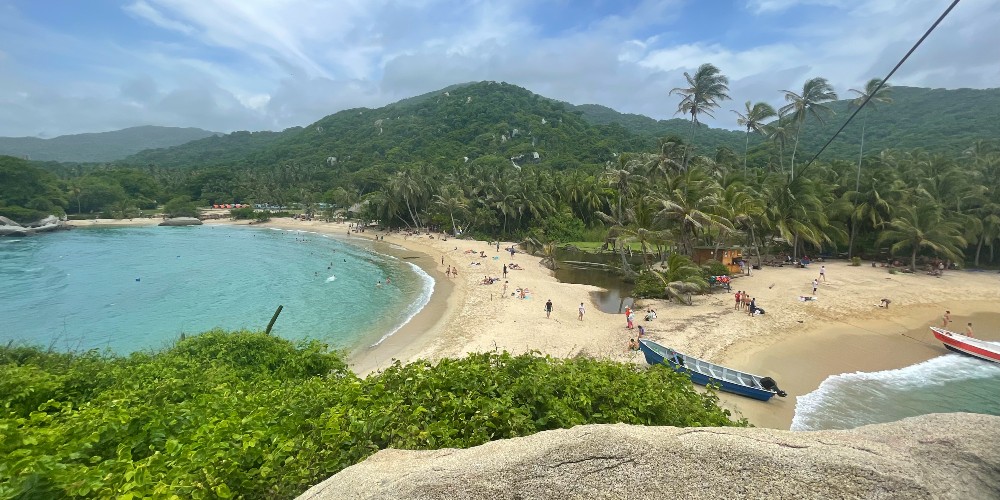
Tayrona, National Park, Colombia
Explore at least a few of Tayrona National Park’s 30 golden beaches
We move on to warmer climes, first flying north to Santa Marta, then by road a further 60 kilometres to Tayrona National Park: 30,000 acres fringed by thirty golden beaches.
“Are those caimans?” I ask the receptionist at Maloka Barlovento, a luxury eco-lodge with arguably the best location of the entire region: perched where the Rio Piedras flows into the sea.
“Oh, just a couple of youngsters,” she says. Said youngsters are at least three metres long and cut a menacing watery shadow; their bobbly snouts and toothy mouths emerging regularly to cause ripples. It suddenly strikes me that our adventure has now truly started.
- Cutting coconuts, Colombia
- Tayrona National Park, Colombia
Swim in the calm waters of Cabo San Juan del Guia
The main gateway to Tayrona National Park, lies just a couple of kilometres away and a guided 10-mile round hike takes in many of its highlights.
We spot anteater tiptoeing on high branches, and cotton-top tamarin peering through the leafy canopy. We buy coconut juice from white-robed, indigenous Kogi men, who open the nut with a pirate-like flourish of machete. And at Cabo San Juan del Guia, considered one of the country’s most scenic spots, we swim in calm water, stilled by a natural breakwater of granite boulders. Lunch is a picnic of grilled chicken and coconut rice from a beach barbecue shack, which we eat with the sand between our toes, under the shade of mango trees.
- Tubing, Rio Don Diego, Colombia
- Rio Don Diego, Colombia
Hit the Rio Don Diego for wildlife and river tubing
The Rio Don Diego is our destination the following day to tube on large rubber rings with kingfishers for company, past more soaring mango trees, this time occupied by curious howler monkeys that deliver primaeval throaty bellows as the current carries us by.
The river is shallow, the flow sedate, and our sons up the ante by trying to tip their dad off his float.
We hop ashore at a beach, deserted apart from one ramshackle shop, where we buy watermelon popsicles and watch hopeful pelicans wade in the shallows next to fishermen hauling in a slippery, silvery catch in a tangle of turquoise net.


